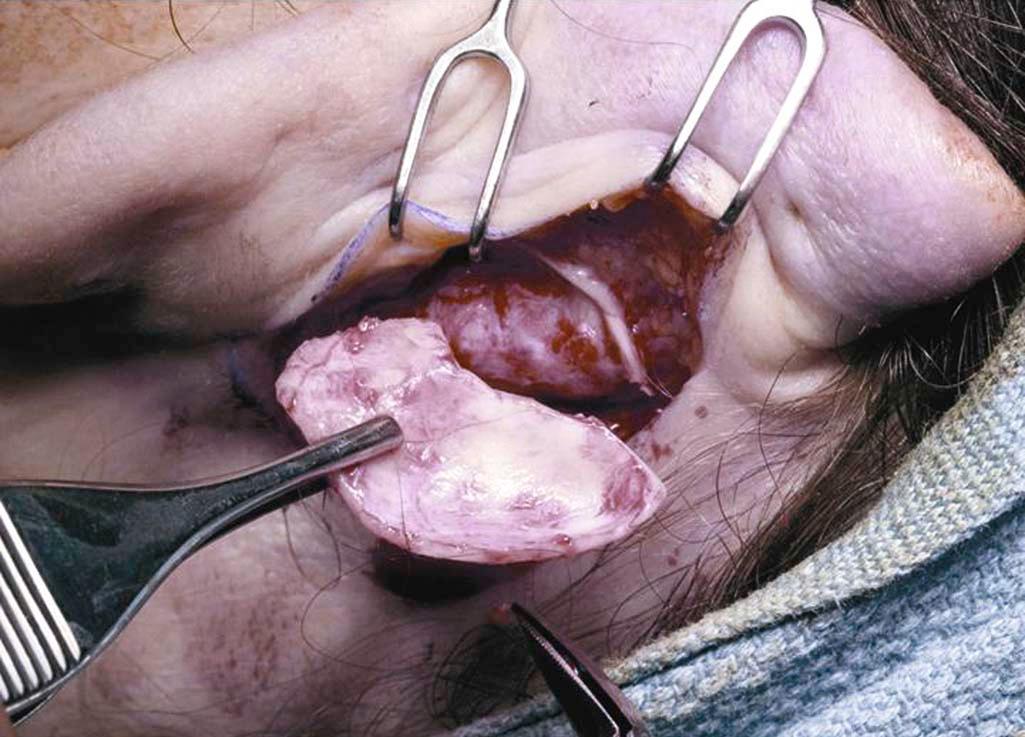Physical Address
304 North Cardinal St.
Dorchester Center, MA 02124
The incidence of postoperative nasal deformities requiring secondary rhinoplasty varies from 5% to 12%. The etiologies of postoperative nasal deformities ( Table 7-1 ) are usually related to one or any combination of the following three problems: (1) displacement or distortion of anatomic structures, (2) underresection due to incomplete surgery, and (3) overresection due to overzealous surgery. Diagnosing these deformities and reconstructing the nasal osseocartilagenous framework form the foundation for obtaining consistent functional and aesthetic results in secondary rhinoplasty.
|
While adequate results may be attained with the endonasal technique in certain circumstances, the limited dissection and exposure offered by the endonasal approach often do not permit accurate assessment, intraoperative diagnosis, and appropriate treatment of complex anatomic problems. Open rhinoplasty techniques eliminate these restrictions imposed by the endonasal approach. We present a systematic approach to secondary rhinoplasty via the external approach that helps ensure consistent aesthetic and functional results in patients with both major and minor postoperative nasal deformities.
A precise anatomic diagnosis is a key step to achieving optimal results in secondary rhinoplasty. The preoperative evaluation begins by defining the deformity, which is accomplished by a detailed history, physical examination, and complete aesthetic facial and nasal analysis. Starting superiorly, the nasofrontal angle height and depth are noted. The bony pyramid, upper lateral cartilages, and supratip are evaluated for their length, height, width, and symmetry. The nasal tip is evaluated in terms of its projection, rotation, symmetry, and position of the tip-defining points. The alae are inspected for increased width, collapse, or retraction. The columella is examined for increased or decreased show. The columellar-lobular and columellar-labial angles are evaluated to ascertain the desired angulation. The internal nasal examination evaluates patency of the nasal valves, position and integrity of the septum, and state of the turbinates.
After the diagnosis is determined and the deformities are defined, the goals of the surgery are established, and a treatment plan is formulated. The operative goals are individualized for each patient according to the deformity. The goals may be to augment the nasofrontal angle, straighten the nasal dorsum, lower the supratip area, correct tip asymmetry and alar collapse, decrease columellar show, etc. If the existing osseocartilagenous framework is underresected, the amount and location of further reduction are determined. If the nasal framework has been overresected, it is determined what tissues are missing and where augmentation is needed. Secondary surgery is usually deferred until 12 months after the previous rhinoplasty.
A key component of the operative planning includes assessment of the grafting requirements and the potential source of grafting materials that will be required. While septal cartilage is generally the preferred grafting material in both primary and secondary rhinoplasty, severe deformities or a paucity of available septal cartilage requires an alternative source of grafting material. This is particularly true in secondary rhinoplasty when structural deformities resulting from previous procedures necessitate significant numbers of grafts. Autogenous cartilage is preferred for any nasal framework replacement.
There are several advantages to using septal cartilage. A large amount of septal cartilage and septal bone can be harvested from the same operative field without the morbidity of an additional donor site. Compared to auricular cartilage, septal cartilage is more rigid, provides better support, and does not have convolutions. It is preferably used as a columellar strut, spreader grafts between the upper lateral cartilages and the septum, and lateral crural strut grafts to support or replace parts of the lower lateral cartilage complexes. When a sufficient quantity is available, it may also be used as a dorsal onlay graft for minimal amounts of dorsal augmentation.
The auricle can provide a modest amount of cartilage for nasal reconstruction. Using a postauricular approach, the amount of harvested conchal cartilage can be maximized without compromising ear protrusion by preserving sufficient cartilage in three key areas: (1) the inferior crus of the antihelix, (2) the root of the helix, and (3) the area where the concha cavum transitions into the posterior-inferior margin of the external auditory canal. An incision is created longitudinally along the posterior aspect of the auricle, and dissection is carried down through the perichondrium. A 27-gauge needle dipped in methylene blue is percutaneously placed every 1 to 2 cm along the inner aspect of the antihelical fold to tattoo the cartilage along the planned excision path to ensure that sufficient antihelical contour is maintained. Dissection proceeds along both the anterior and posterior surface of the conchal bowl, and a kidney bean–shaped piece of conchal cartilage ( Figure 7-1 ) is harvested while leaving sufficient cartilage at the aforementioned key areas for support.

Because of its flaccidity and convolutions, it is best used when these characteristics are desired. It is usually used for reconstructing the lower lateral cartilage complex, for small onlay grafts, or for placement in the columella to provide tip support. However, it is a second choice to septal cartilage because of the inherent difficulty in obtaining and maintaining the desired shape and contour. While initial results of dorsal augmentation with auricular cartilage are often satisfactory, surface irregularities can become apparent with the passage of time. Furthermore, the irregular contour and limited supply of auricular cartilage often preclude its use.
Become a Clinical Tree membership for Full access and enjoy Unlimited articles
If you are a member. Log in here